Analysis: From planets and constellations, to eclipses and the Aurora Borealis, here's what to look for in the sky this spring
We have observed the night sky since the dawn of civilisation and it is one of the great outdoor spectacles: a blanket of stars is a sight to behold, and there can be surely nothing more empowering than discovering something new about the night sky. While optical aids and dark locations offer much; there remain, even through the glare of city lights and with nothing but our own eyes, many wondrous celestial events to behold.
Let's start by putting some shape on the sky. On a clear night we see about 2000 stars, organised through the ages into mythical character-based patterns called constellations, of which there are 88. From Ireland we see about half of them.
The Earth and planets orbit the Sun in a plane, found in the sky as an imaginary line called the Ecliptic nested among the 12 constellations of the Zodiac. And so we find the planets traversing the Zodiac over time, each one usually the brightest object in the constellation it's passing through.

Because the Moon orbits the Earth in a similar plane, we find it within the Zodiac also; although it moves faster through it in only 29 days - by comparison Mars takes two years and Jupiter 12 years to traverse the entire Zodiac - and why the Moon regularly passes in front of planets in what are called occultations.
From Ireland, the Zodiac constellations appear in the southern sky, so that's where the interesting objects to observe lie. You find yourself facing south with sunset to your right. Our Sun is but one of billions of stars of our Milky Way galaxy, and although we can't see those countess individual stars, we can see their combined light as a faint band of light spanning the sky, with its most interesting regions toward the south.
What to observe with the unaided eye: February to April
Sun
Never look directly at the Sun for fear of blindness. Our Sun goes through an eleven-year activity cycle; and when at maximum as around now, it can trigger the Aurora Borealis. As witnessed last year and surely through 2025 too, some auroral activity is visible from Ireland, with strong episodes visible from towns and cities. Aurora happens when the Sun's energetic particles collide with our atmosphere toward the North Pole - so look north after sunset for Aurora. Check the US National Oceanic and Atmospheric Administration (NOAA) for forecasts of publicised auroral activity.
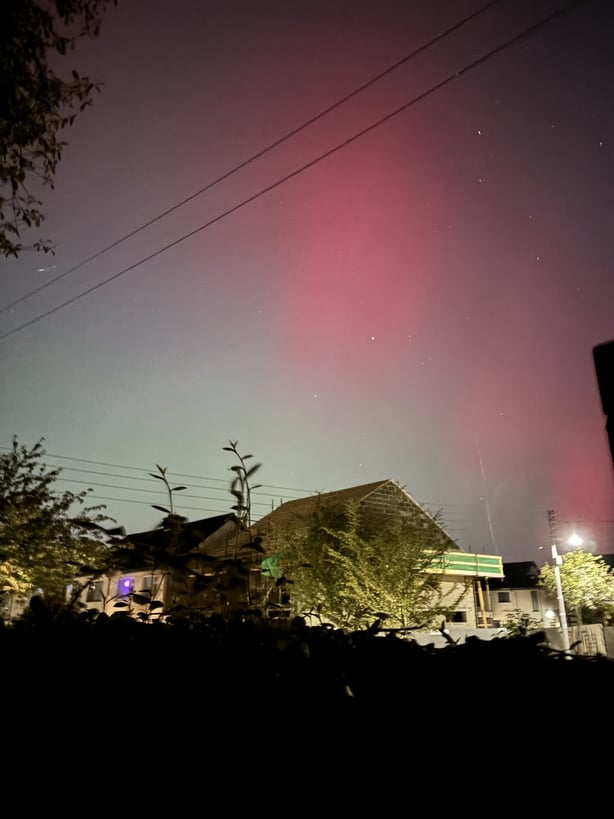
Moon
The Moon is a splendid object to gaze upon, sometimes as an enigmatic thin crescent just after New Moon, sometimes as a glorious Full Moon. Try to spot Mare Tranquillitatis where Neil Armstrong set foot in 1969 (hint - it's the left eye of "The Man in the Moon") or test your eyesight to see the bright rays of debris emanating from the crater Tycho in the south. New Moons occur on February 27, March 29 and April 27 – look for a beautiful thin crescent several days later just after sunset; while Full Moon's take place on February 13, March 12 and April 12.
There is nothing more intriguing than the Moon occulting one of the planets or a star cluster, where they disappear on the left side of the Moon and reappear from its right 90 minutes later as it continues on its journey. The Moon occults Mars on February 9 at 18.50, and the Pleiades star cluster on April 1. A partial eclipse of the Moon takes place on March 14, visible from 4am, while a partial eclipse of the Sun occurs two weeks later, on March 29 at 10am, when the Moon will cover 40% of the Sun's disc.
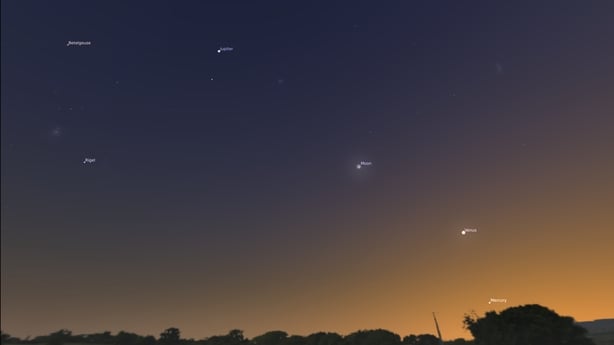
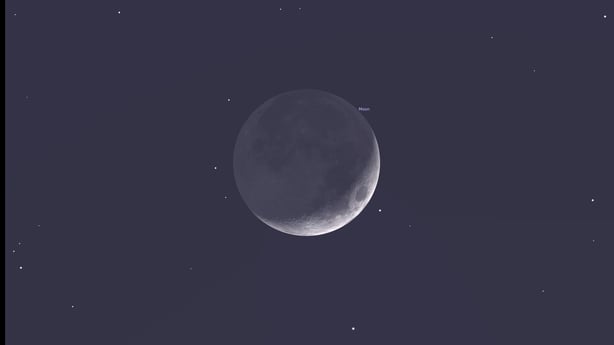
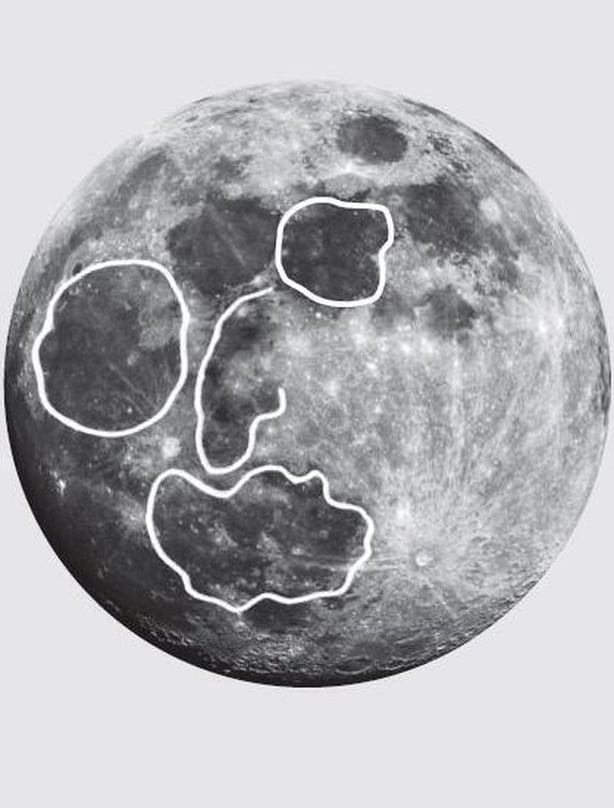
Planets
Five planets are visible to the unaided eye. Mercury and Venus, orbiting inside of Earth, appear close to the Sun in the west after sunset, or in the east before sunrise. It's a challenge - and a badge of honour - to see Mercury, and a good opportunity arises in early March for about an hour each evening after sunset. Venus is the brightest object in the sky after the Sun and Moon and can outshine the brightest star, Sirius, by 15 times. It will be at its brightest on Valentine’s Day in the southwest, after which it moves closer to the Sun, becoming a morning object before sunrise from March 22 onward.
Mars and Jupiter are visible high and south through February and March. Jupiter is the brightest object in the constellation of Taurus, while Mars appears a striking orange-red slightly more southeast and close to the two bright twin stars Castor and Pollux in the constellation Gemini.
Constellations
Our whistle stop tour of the spring sky would not be complete without mentioning some constellations on show. Orion The Hunter is best identified looking south at its three bright stars in a line that form his belt. His left shoulder is marked by the red supergiant star Betelgeuse, while the lower right of his tunic by the blue supergiant Rigel. Orion’s sword extends down from his belt, signified by a faint patch of light just visible – the Orion Nebula - where new stars and planets are forming. Betelgeuse is expected to explode as a supernova soon and can vary significantly in brightness: from 2020 to 2023 it dimmed three-fold before returning to its current brightness.
Read more: Look up: eclipses, supermoons & meteor showers to see in Irish skies in 2025
Above Orion is Taurus the Bull. Its head - pointed toward Orion - is identified by the red supergiant Aldebaran surrounded by a shimmering open-cluster of new-born stars called The Hyades. Close-by are The Pleiades or Seven Sisters - another cluster of a thousand stars - though only seven at most are seen with the unaided eye. How many can you see?
Both Orion and Taurus set in the west through April, wherein the constellation of Leo the Lion rises from the east. The Plough - a circumpolar constellations as it is visible all year round - is unmissable directly overhead through spring.
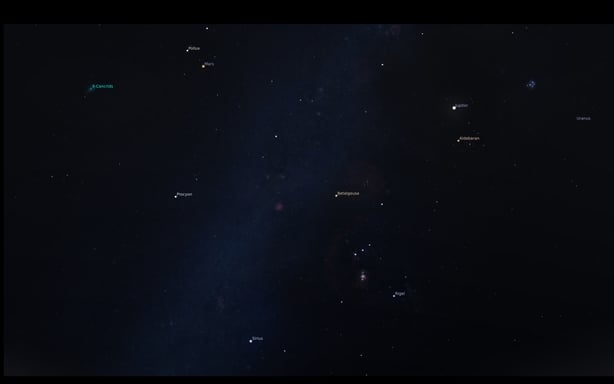
Doing a spot of observing starts with identifying what events or objects you wish to see, which evening and time they occur and what part of the sky to view. Wrap up well and switch off any lights nearby. Allow your eyes ten minutes for dark adaption to see fainter details; and have a red light handy for any needed illumination. Observe with family and friends to share in the splendour of it all – the sense of discovery can be potent. The spring sky is spectacular this year - so head on out and observe!
Follow RTÉ Brainstorm on WhatsApp and Instagram for more stories and updates
The views expressed here are those of the author and do not represent or reflect the views of RTÉ







